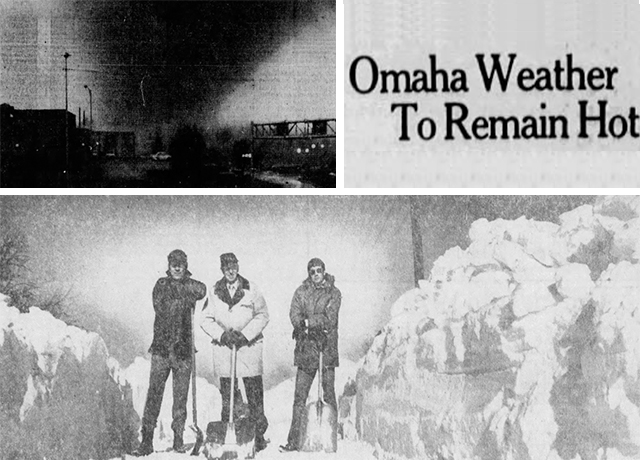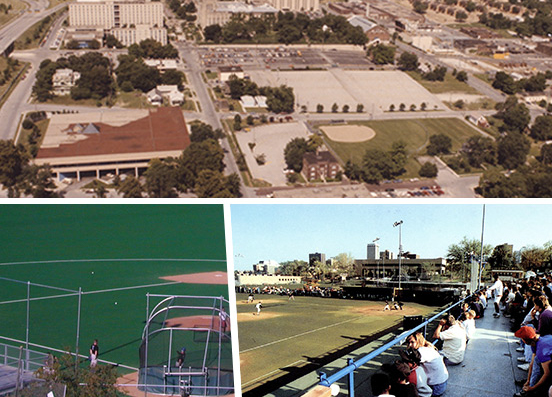Featured Testimonial About Creighton University
It’s reshaped how I view service forever.
More:
• How did the Creighton Service & Justice Trips change your life?
• Want to support the Schlegel Center for Service and Justice? You can make a gift here!

A note about the maps: The push pins approximate the number of different locations Creighton has gone for the Service & Justice trips since 1983 and not the number of return visits to those places. That would take far too many pins. Please also note that our map wasn't big enough to fully capture all the Service & Justice Trip locations in such cities as Chicago, Minneapolis and Omaha itself.
In 40 years, 7,644 Creighton participants have gone on 966 Service & Justice Trips.
* * *
40 years of Service & Justice
By Micah Mertes
The seven pillars of Creighton’s Service & Justice Trips are …
1. Simplicity
2. Service
3. Sustainability
4. Justice
5. Community
6. Reflection
7. Solidarity
* * *
1. Simplicity
In the spring of 1983, seven students — possessing little more than good intentions and a stack of peanut butter sandwiches — packed into a van and hit the road for a spring break trip to Kentucky.
Once the students arrived, their host, the Christian Appalachian Project, split them into two groups, dispatching them to the poverty-stricken coal-mining towns of Martin and Harlan, where they would visit the elderly, build steps, repair homes, clean yards, chop firewood, whatever was needed.
It wasn’t, the students knew, the kind of work that changed the world. But it did end up changing their world. More than 900 miles from campus, they got to experience Creighton’s values — and their own — in a whole new light.

There was no plan beyond the trip itself. They didn’t intend to start an annual program. They weren’t trying to form a student organization. They just wanted to help.
Now, reflecting on it 40 years later, those former students are a bit overwhelmed by what that first trip turned into — a program that has shaped the lives of thousands of alumni, a tradition so thoroughly woven into Creighton’s DNA that it’s hard to believe it hasn’t existed since 1878.
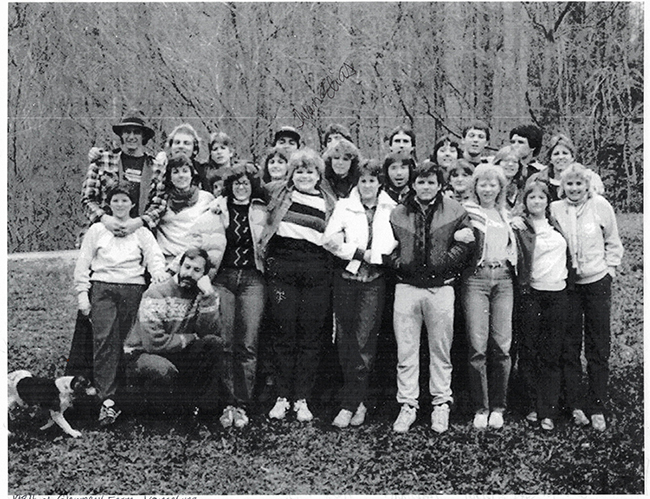
To tell the story of the Creighton service trips (now called Service & Justice Trips, part of the Schlegel Center for Service and Justice), we’ve wrangled together a sort of oral history from the people who were there — from that first ride to Kentucky up through today.
Format note: Interviews were mostly conducted separately (and recently). Some quotes, if specified, were culled from archives material and personal letters written at the time of the trips.
Read more: How did the Creighton Service & Justice Trips change your life?
2. Service
The first seven students included Ellen Townley, BSN’83, Paul Pavlik, BSW’84, and his sister Katie Pavlik Hollmann, BA’87. The idea for a spring break service trip was Ellen’s, who had served in a summer program in Appalachia the previous year.

Ellen: It started as a really organic process. We found a group, and somebody gave us a campus van.
Katie: In the years after that, we would always use a Townley or Pavlik van. There were a lot of memorable breakdowns. A Pavlik van broke down in Oklahoma. I left a broken-down 14-passenger Townley van in Porcupine, South Dakota.
Ellen: We went back to collect the van the following year and found someone living in it. In those early years, we were flying by the seat of our pants, as they say.
Paul, in a letter to his brother in Feb. 1983, shortly before the trip: We’re raising some funds for the trip. We sold donuts from Pettit’s in the dorms and tonight sold popcorn outside the movie on campus. It will come to about $50 per person to go.
Ellen: To be perfectly honest, while I have always felt a strong sense of service and giving back, there was also a motivation to get out of Omaha and have an adventure.
Katie: We all wanted to experience something new.
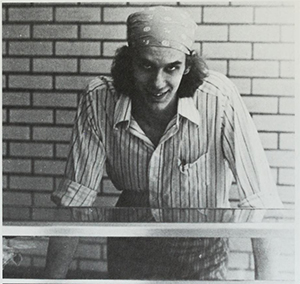
Ellen: Then we started doing home visits, seeing how people lived, getting to know what their lives were like.
Katie (from a 1984 Creightonian article): It’s not like we were going in and pushing ourselves into their lives. We were there saying, “Please, tell me about yourself.” And the people were so happy to talk to us.
Ellen: Later, we had a lot of late-night discussions. We talked about the history, the environment and the social structure of the area. Especially how the Big Coal industry had impacted the region.
Katie: From that trip on, we always tried to learn as much about the culture and the people who lived there as we could, wherever we went.
Ellen, as a freshman, quoted in a 1979 Creightonian article: When you meet people who don’t have much, you learn a lot about your own values. We take so much for granted.

Katie: We came back with our attitudes changed. We remembered what we learned and integrated it into our lives.
Ellen: Looking back, I realize the purpose of that first trip was twofold. One was to do something worthwhile. The other was to educate people and raise their consciousness and increase awareness of how things are in a different part of the country, that there are real pockets of poverty, despair and inequality in the U.S.
Katie: When we got back from Kentucky, I remember, Paul and I just had a lot of people who wanted to know about the trip. They asked, “Hey, can we go next year?” We said, “We’ll see if we can do this again.”
• Want to support the Schlegel Center for Service and Justice? You can make a gift here!
3. Sustainability
Shortly after the ’83 trip, Ellen graduated (and won the Spirit of Creighton award). Though she stayed involved, the Pavlik siblings would run the trips for the next few years. They returned to Kentucky in ’84, this time with a group of 42 students. Year three, 114 students went to eight locations.
(In 2019, about 350 students went on 46 different trips altogether for the spring and fall breaks combined. Numbers are bouncing back from the pandemic. This spring break, nearly 100 students went on 11 trips.)
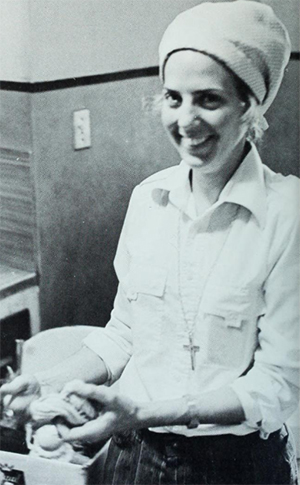
In those early years, the student-run trips were supported by the community service program in Campus Ministry, at the time run by Sister Muriel Cameron, RSCJ, a former instructor on the theology faculty.
Sr. Muriel (in a 1990 Creightonian interview): Not only was the aspect of service and exposure to another culture significant, but people found themselves with time to reflect on personal issues. That is a primary reason for the program.
Sr. Muriel (now): The students from those first years were socially conscious, of course. And they wanted an alternative to the usual spring break. I think some of that was the influence of the theology classes. They were wonderful students. (Any of them you speak with, be sure to tell them that I remember them, I pray for them, and I loved working with them.)
One of the students she worked with was Wayne Young Jr., PhD, BA'93, now Creighton’s vice provost for Student Success. In 1990, fresh off his first service trip and realizing the program’s future was uncertain, Wayne went to Sr. Muriel.
Wayne: Some of the seniors who ran the trips were graduating, and Sister Muriel had been reassigned away from Creighton. She told me there might not be a home for the service trip program anymore. But I told her I wanted to do what I could to help keep it going.
Sr. Muriel: I remember Wayne well. He was an outstanding student.
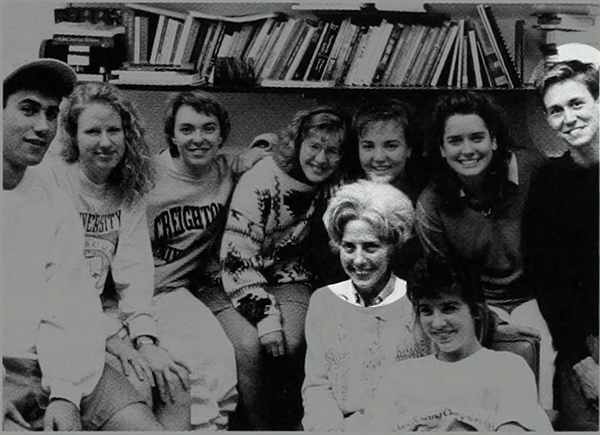
Wayne: We knew we couldn’t let these trips go away. They were too important. They were our Jesuit mission in action.
Sr. Muriel: Students need to go places. You can’t just study something. You need to see it to understand it.
Wayne: It was and still is a program that forms community, within Creighton and with those on the margins.
Sr. Muriel (in a 1989 Alumnews interview): You can’t help but be changed when exposed to new horizons of human experience.
Wayne: Those trips — the service, the prayer, the reflection and the community … boy, they taught me more than anything.
4. Justice

In the past 20 years or so, the program has added more time and structure for formation and reflection before and after the trips. Though the program is still student-run, the Creighton Center for Service and Justice (as it was previously known) was established in 1995 with a small staff of employees.
From an earlier version of the University’s Mission Statement: Creighton realizes the existence of many critical problems confronting our world but judges that it best serves society by developing concerned individuals who are intellectually and spiritually prepared to deal with these changing problems effectively.
Ken Reed-Bouley, MDIv, MBA, director of the Schlegel Center for Service and Justice: When you look at how these trips have evolved, I think one big change from the early years is the justice piece.
Kelly Tadeo Orbik, BA’06, MS’08, associate director of the SCSJ, went on six service trips as a student: Social justice isn’t just an optional add-on. It’s an intrinsic part of it.
Ken: We’re not just going to these communities to pound nails.
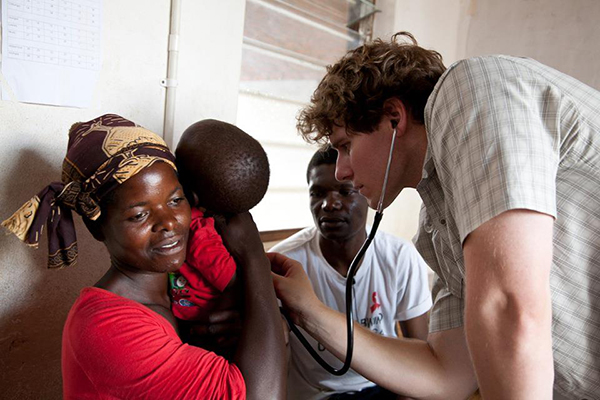
Kelly: We’re cultivating connections and building bridges with our host partners and the communities they serve.
Ken: We’re looking at systemic issues, getting at the root cause of things and trying to change social structures with and on behalf of those who experience poverty and marginalization.
Jason Beste, BS’03, MD’08, past Service & Justice Trip participant and executive director of Creighton’s Arrupe Global Scholars and Partnerships Program: Another key component to the trips are their emphasis on immersion. These trips allowed me to be immersed in another culture for an extended period of time with a structure that allowed for in-depth discussions on social justice and injustice.

Sr. Muriel: It’s about faith and service and justice. Not just faith, not just service, not just justice. They’re intertwined.
Ken: We’re trying to introduce students to people and experiences that will break open their hearts and transform them so that, hopefully, they can go on to transform society.
Kelly: They gain perspective on the value of community, the value of compassion and the value of taking the long view. They see the value of showing up.
Jason: The trips are really one of the things that make Creighton Creighton. It’s where we walk the talk as a university.
Kelly: Even though it’s really hard, even if social justice isn’t happening as fast as anyone wants, they see they still have the ability to alleviate suffering. They see that we can’t give up.
5. Community
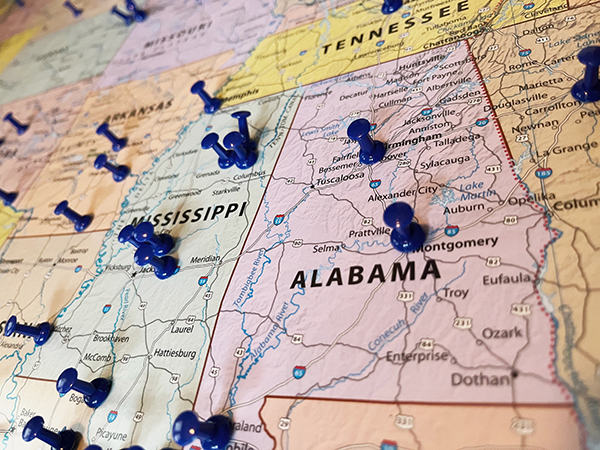
For each fall and spring break, students and staff of the Schlegel Center for Service and Justice choose destinations and work with community partners through which students can explore the justice component of the trips. They learn about immigration while serving in El Paso, Texas, for instance. Or about civil rights while working in Montgomery, Alabama.
Mayela Hernandez, a senior in the College of Arts and Sciences: I went on that 2019 trip to Montgomery. The focus was about racism and segregation and how they still affect people today. We got to work with kids and help out older folks.
Sr. Muriel: Whenever I went on the trips, I always had the students meet the recipients of the service so they could know them and hear the stories of their lives.

Jason: The trips have never been for a grade. They’re for the greater good.
Mayela: One of the most memorable parts of that Montgomery trip was just speaking with the community and hearing from people firsthand. We even got to meet Martin Luther King Jr.’s barber.
Erin Elliott, BA’01, former women’s basketball player who went on four Service & Justice Trips as a student: With my trips, I remember not so much the work we did but the people we met. I specifically remember how many similarities I had with the people we were helping.
Ken: We want students to take these experiences back to their lives and integrate them into their studies, for whatever they’re hoping to become.
Kelly: The trips can be an incubator for vocation because the students are getting to test out their skills and hopes and dreams. They get to see if their vision of the world and of themselves is accurate.
Jason: I already knew I was being called to become a physician by the time I went on my first Service & Justice Trip, but what it did confirm was a deep desire to work with populations who are marginalized. These service trips led me to do a year of volunteer work before medical school.
(For his service work, Jason was a high school student activities director, bus driver and substitute teacher on the Pine Ridge Reservation.)
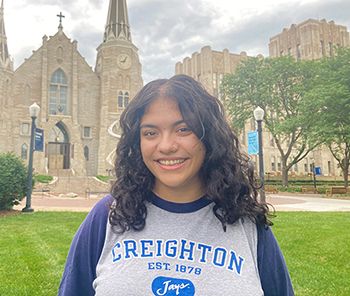
Wayne: Students are shaped by these trips, and they bring those values and that character to any line of work they end up doing.
Jason: Out of four years of college, here are five days of service that confirm or change what you want to do with your life.
Mayela: The Service & Justice Trips definitely changed the direction of my life. When I first came to Creighton, I started like so many other freshmen — premed.
Kelly: We’ve asked our students, and nearly all of them say the experience of the service trips confirmed or changed their vocation in a significant way.
Mayela: The experience of the Service and Justice Trips made me realize there’s another way for me to serve. I had changed my major from premed to political science because one important way you can help people in this country as a whole is through policy. That trip validated my decision.
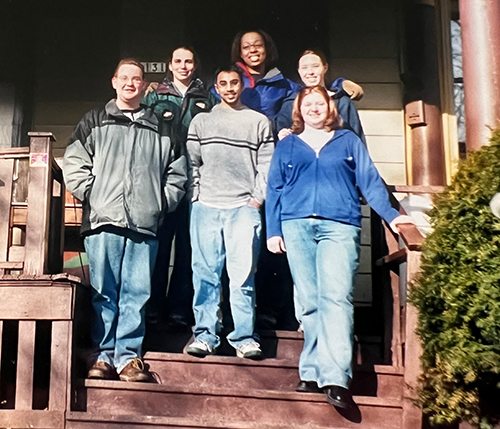
Wayne: So many of my friends who went on the service trips would later tell me, “That was what made me want to be a better doctor.” “That’s why I wanted to go into counseling.” “That’s why I joined the Jesuit Volunteer Corps.”
Jason: This program breaks you out of the singular. It gives you the opportunity to enter the common good and inspires you to want to stay a part of and work on behalf of the common good after college.
Erin: People who go on service trips often go off and find their lifelong passion a bit earlier than most.
Jason: Something stirs inside you that’s forming you to become a better person.
6. Reflection
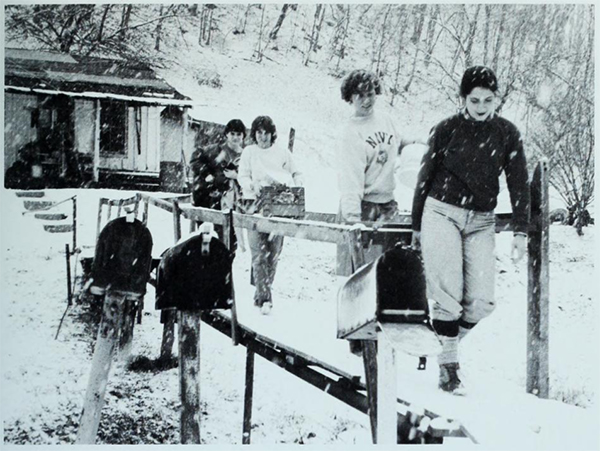
The service trips are, in a way, a microcosm of a Jesuit education itself. The experience of a degree typically lasts four years. The experience of a service trip lasts about a week. But what’s gained from each can last a lifetime. Through reflection, these experiences can inform each new day of how that life is lived after Creighton. That — ideally — is what our students take with them.
Sr. Muriel (from a 1989 Alumnews article): The experience of prayer and reflection enables a person to recognize the presence and action of God, both within oneself and in exterior reality.
Sr. Muriel (now): If you don’t understand what you’ve experienced, you can’t make it a part of who you become.
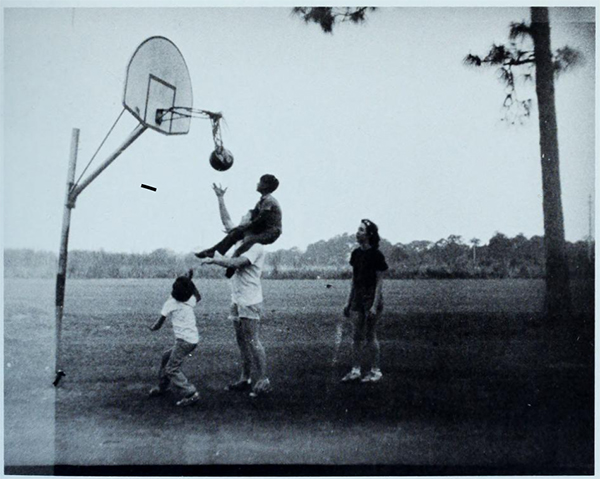
Wayne: Our trips would end each day with a prayer, a group discussion and a reflection. The trips might have felt hollow if you didn’t have that every night.
Jason: It was an immersion for everyone to reflect in a very intentional way.
Mayela: We’re only getting a glimpse of someone else’s reality on the trips. Reflecting on that experience makes sure no aspect of it goes unnoted. And you get everyone else’s perspective through discussion.
Wayne: I can vividly recall those conversations. Putting these experiences into the context of my daily life empowered me to find my voice as a young man.
Mayela: Those reflections, as much as the experiences we were talking about, fundamentally changed how I view the world.
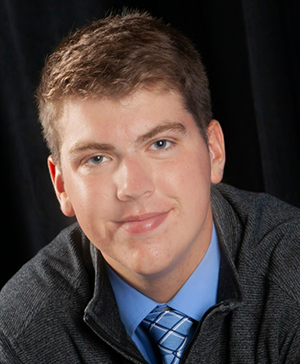
Max Hollmann, a sophomore in the Heider College of Business (and the son of service trip co-founder Katie Pavlik Hollmann): You sure learn a few things about yourself on service trips.
Mayela: One thing I remember the most about the trips was how wrong I was about them at first. I remember I was at the Schlegel Center office interviewing to go on my first service trip. I had done a lot of different volunteering before, so I gave my typical answers about service that I usually do. But they told me, for the service trips, we’re not there to serve the community. We’re there to walk alongside them. I think that’s so beautiful.
Wayne: There are a lot of other schools that have service trips that are great, but Creighton’s trips are different.
Max: It’s so important that we continue this tradition.
Wayne: At Creighton, the service is in the context of … What is my faith calling me to do? How am I accompanying people? Where is God asking me to use my talents, my gifts, my skills?
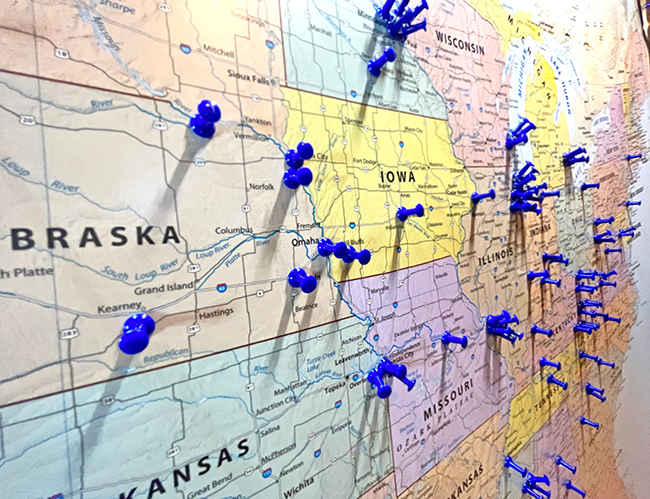
Erin: It’s one thing to talk about the mission. This was my opportunity to live it.
Wayne: I’d even go as far as to say that if Creighton didn’t have the spring and fall break service trips, I don’t know that I would have the same affection for Creighton that I do.
Mayela: It’s reshaped how I view service forever.
7. Solidarity
The final word goes to Service and Justice trip co-founders Ellen, Paul and Katie, as they look back on everything that van of seven students has led to in the past 40 years.
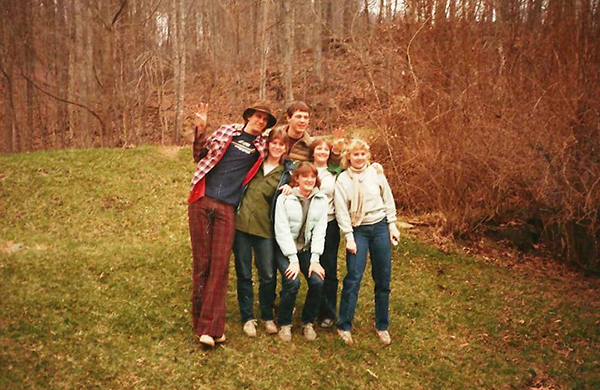
Katie: The trips and the people I met through them — both students and at the work sites — are highlights of my Creighton years.
Paul: They were my favorite memories of Creighton. We got a bunch of other kids to go across the country and help people.
Ellen: It all came from a core of faith and service.
Paul: I think that’s the best thing I did at Creighton.
Ellen: It’s overwhelming when I think of how much bigger the program has become and how long it’s lasted and how many students have gone on the trips. Forty years. It’s amazing to be a part of that.
40 years. 7,644 Creighton participants. 966 Service & Justice Trips.
More:
• How did the Creighton Service & Justice Trips change your life?
• Want to support the Schlegel Center for Service and Justice? You can make a gift here!


